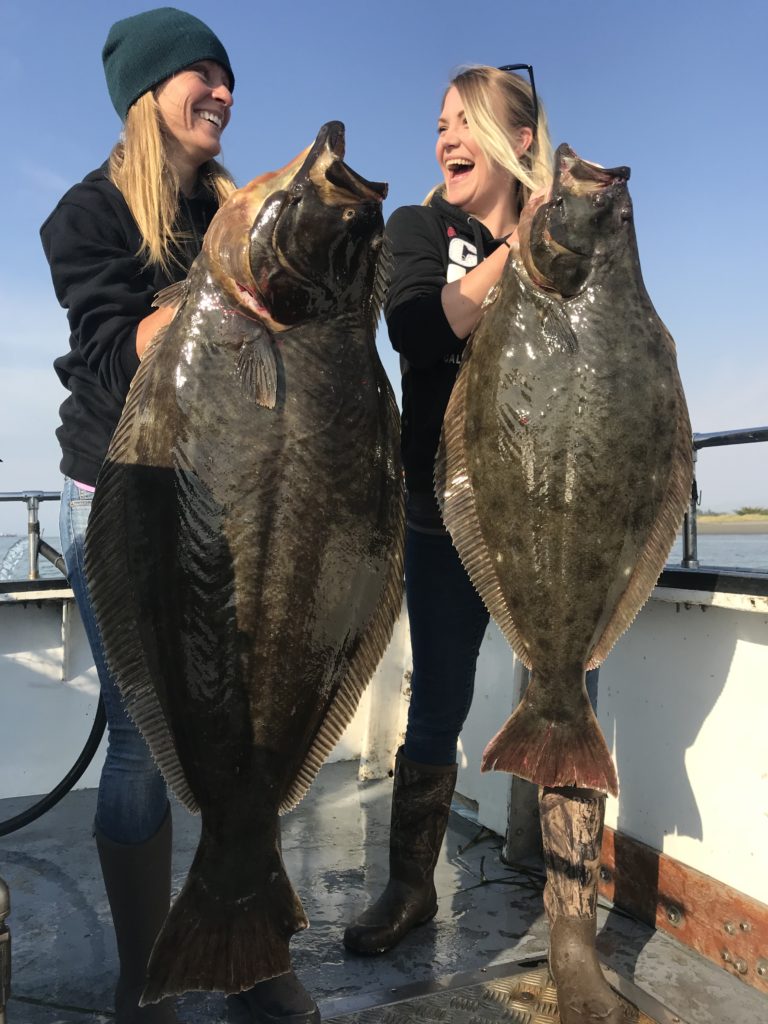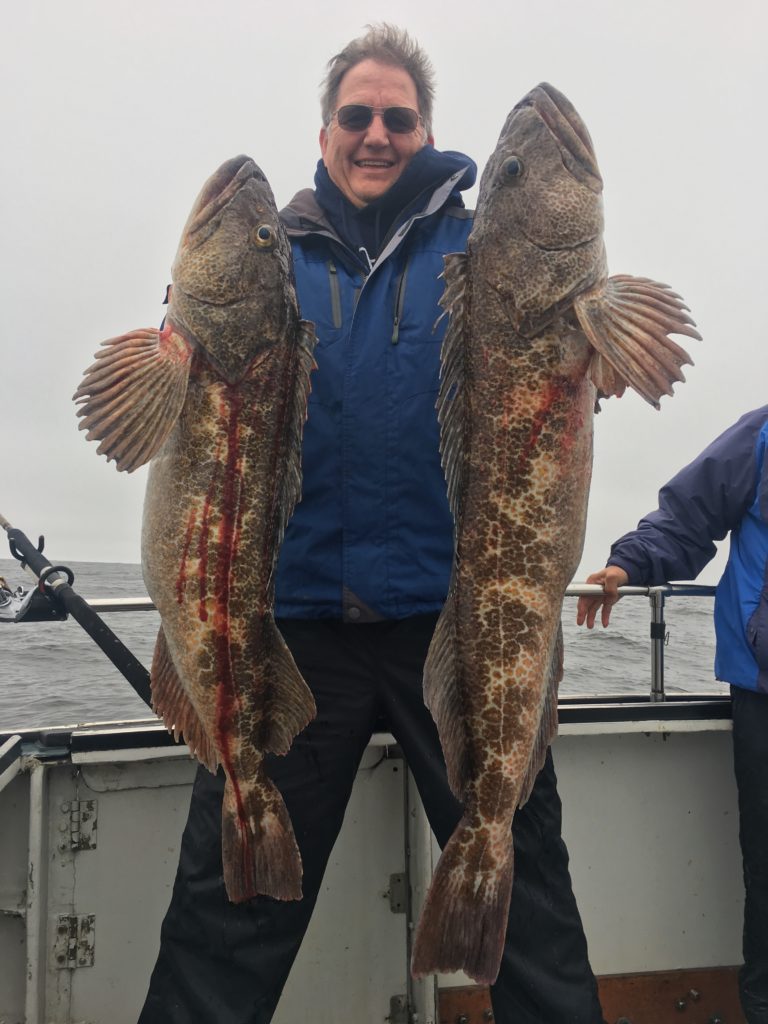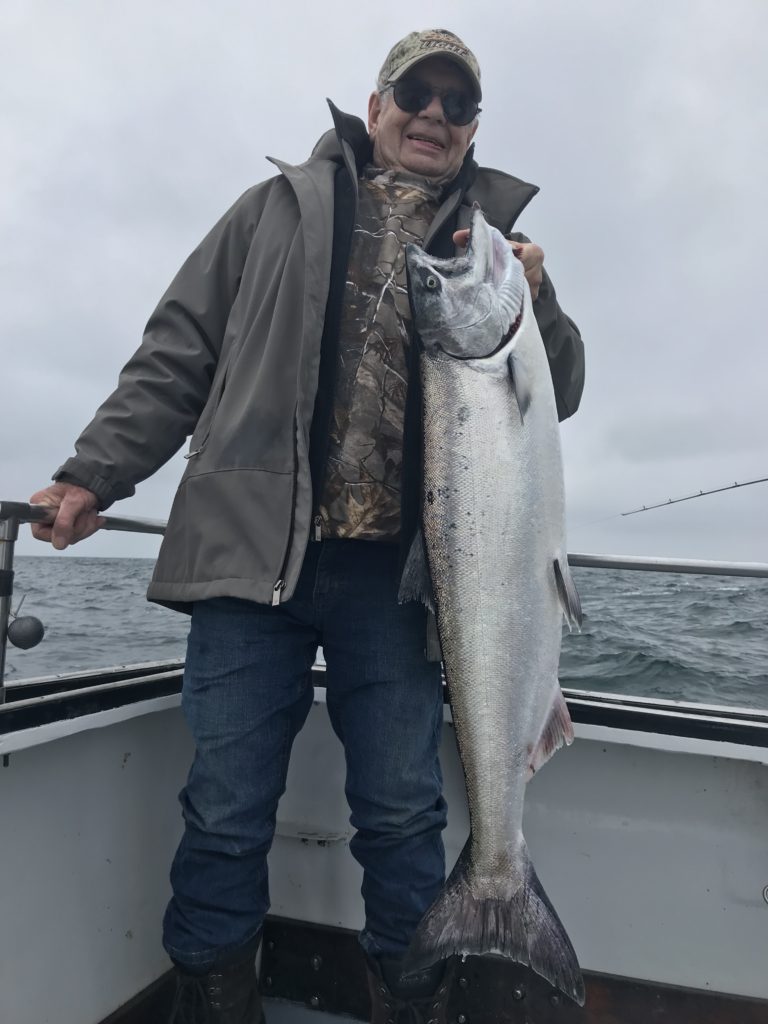Pacific Halibut, Rockfish Among The Options On Lost Coast Deep Sea Trips

The following appears in the June issue of California Sportsman:
By Chris Cocoles
There are few more spectacular California coastal areas to fish than Humboldt County’s rugged Lost Coast. And the fishing itself can be epic as well.
For guide Tony Sepulveda, the name of the game in these waters in the summer includes salmon (see sidebar), rockfish and lingcod. But more recently, Sepulveda has gotten his customers more than a few bonus Pacific halibut for the fish box.
“They’re not the kind of fish that you’ll catch a ton of,” says Sepulveda, who operates Green Water Fishing Adventures (707-845-9588; greenwaterguides.com). “But when I just used to go down there and fish rockfish and lingcod, I’d catch maybe one or two (halibut) a season. And now I’ve got it to where I catch them pretty darn regularly.”
These are legitimate fish too. The Pacific halibut will usually range from 40 to 70 pounds, which can provide an angler with a lot fillets to stuff in the freezer.
“Those things will sell for about 20-plus bucks a pound, and you figure a 70-pound fish will get about 40 pounds of yield,” Sepulveda says. “That’s like an $800 fish.”
STRUCTURALLY SPEAKING
While past trips usually meant more incidental halibut catches, these days Sepulveda will spend maybe 30 percent of a charter specifically targeting the big flatfish when not reeling up various rockfish species or the larger lings. It all depends on the structure below – hard bottom for rockfish and soft bottom for halibut.
“The hard bottom in theory is big tentacles – big chunks of rock that rise up 50 to 60 or 100 feet off the ocean floor. And then there are other stretches where a lot of it is just cobble and relatively flat but still hard.” Sepulveda says.
Rockfish “species like coppers and quillbacks and canaries are what you’ll catch on the cobble bottoms. But when you fish the tentacles you’ll catch more blues, black rockfish, China rockfish, vermillions. Different habitats within the hard bottom will hold different types of rockfish.”
But as the boat drifts away from that cluttered sea floor, you can start to find more halibut on a more smooth bottom.
“And as you fall off the edge of those (hard-bottom areas), it turns from either straight, big chunky craggly rock or flat, chunky cobble, and it will turn into mud or sand. And that’s where those halibut are laying,” Sepulveda says.
BAIT UP OR GO ARTIFICIAL
Tackle remains the same when fishing these waters, whether it’s rockfish or halibut on your mind. But while swimbaits, jigs or shrimp flies work best for the various lings and rockfish, bait like sardines will increase the chances of getting into a fight with a 40- to 70-pound Pacific halibut.
“But the biggest thing is just carrying your drift out into places that you’re not going to catch a rockfish anymore and falling off the edges of the reef,” Sepulveda says. “And rather than resetting your depth and getting back on the reef, fishing those buffer zones coming off the hard bottom is the biggest thing.”
BONUS ’BUTS
As many boats started going out off Humboldt in late May for the start of salmon season and for more deep-sea trips, the wind was more brisk than normal, but the conditions are expected to be better as summer draws near.
Hooking a hard-fighting halibut is awfully enticing for an angler looking to fill the cooler on a combo trip, but they represent quality and rarity more than quantity. While Sepulveda did get six anglers their one-fish limit each on one trip last year, catching just one will make for a memorable experience for all the day’s clients.
“They’re not what you’ll be catching on every trip you go on down there, but more often than not I’ve been putting at least one of those on the boat,” he says. “They’re big and impressive. And so they make for a pretty cool capper on an amazing day of rockfish and lingcod.” CS
OCEAN SALMON PROSPECTS IMPROVING
Two years ago, the fall-run Chinook salmon forecast for the Klamath River was so bleak it all but closed the ocean season for most of the coastal waters. But last summer guide Tony Sepulveda saw signs of life that 2019 was going to be better.
“Of course, the salmon have been the bread and butter in Eureka for so many years,” Sepulveda says.
“The last couple years, after having the one closure year two years ago, last year there were just jillions of shakers around – lots and lots of small fish. So we’re finally starting to see that year’s class come back and get into some good salmon fishing again. The season just opened and it’s been really good fishing.”
The expectations going into 2019 were a bit tempered, as California Department of Fish and Wildlife projections of 274,200 adult fish entering the Klamath were even lower than 2018, but Sepulveda expects a lot of fish to be around between now and the end of the summer.
“They were just about one year too young. So those things have grown up now and we’ve had a few days of fishing them and everything’s looking really good,” he says.
“The fish are out deep. We’re fishing in about 300 feet of water and the fish are coming pretty deep on the wire down about 100 or 200 feet. But typically as the summer wears on those fish start to move in shallower. I’d imagine in another month or so we’ll start seeing them getting up there on the beach. It looks great because we have a lot of salmon around this year.” CC






